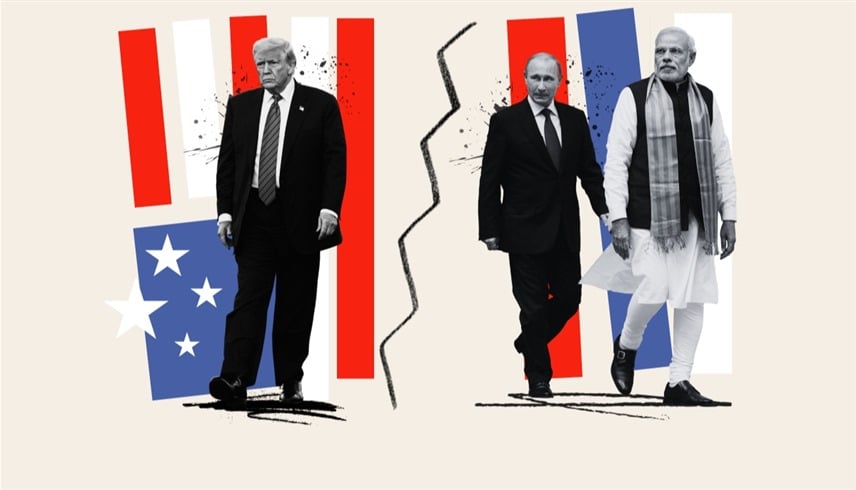The recent visit of Indian Prime Minister Narendra Modi to Beijing, marking his first trip to China in seven years, has been interpreted as a symbolic moment in shifting global economic dynamics. Writing for 24.ae, analyst Bassik highlighted the significance of Modi appearing alongside Chinese President Xi Jinping and Russian President Vladimir Putin, a gathering that signals a potential alignment aimed at countering U.S. economic strategies. n nThis trilateral engagement, according to the analysis, sends a clear message of resistance to Washington’s approach of leveraging trade wars and economic sanctions to assert dominance. The article notes that tariffs imposed by former U.S. President Donald Trump on India, China, Brazil, and South Africa failed to weaken these economies, instead prompting them to explore deeper cooperation. n nA central concern in Washington, the piece argues, extends beyond trade barriers to the possibility of undermining the U.S. dollar’s role as the primary global reserve currency. India, in particular, is seen as a pivotal player due to its ability to facilitate Russian energy exports to global markets, bypassing Western sanctions—an arrangement perceived by the U.S. as a direct challenge to its financial influence. n nIndia’s diplomatic balancing act is also emphasized. While engaging with Beijing, Modi previously visited Tokyo and refrained from attending Russia’s Victory Day military parade, suggesting New Delhi’s intent to maintain strategic autonomy and avoid full alignment with any single bloc. As expert Christopher Clary observes, India is demonstrating its capacity to navigate multiple alliances to serve its national interests. n nChina, the article notes, has capitalized on global dissatisfaction with U.S. unilateralism. At the Shanghai Cooperation Organization summit, President Xi promoted principles of non-interference, multilateralism, and dialogue—contrasting them with what Beijing describes as American bullying. This narrative has resonated with nations disillusioned by Washington’s foreign policy. n nAlthough U.S. tariffs could dampen India’s appeal as an alternative manufacturing hub—given that exports to the U.S. account for about 2% of its GDP—the Indian economy has shown resilience. In the second quarter of the year, it grew by 7.8%, the fastest pace in five quarters, driven by rising domestic consumption and lower inflation. n nDomestically, Modi’s government has responded with structural reforms, including simplifying the Goods and Services Tax structure and offering incentives to sectors hit by American tariffs. These measures are expected to strengthen economic flexibility and support long-term growth. n nThe author concludes that Trump-era trade policies may inadvertently accelerate the formation of a new economic bloc led by Beijing, New Delhi, and Moscow. By adopting punitive measures, the U.S. could be pushing adversaries toward alternatives to the dollar-based system, paving the way for a restructured international economic order. n— news from site 24 n
— News Original —nتقرير: محور اقتصادي ثلاثي يتحدى سياسات ترامبnnقال بيسيك إن زيارة رئيس الوزراء الهندي ناريندرا مودي إلى بكين بعد غياب استمر 7 سنوات حملت رسائل بالغة الدلالة. فقد ظهر مودي إلى جانب الرئيس الصيني شي جين بينغ والرئيس الروسي فلاديمير بوتين في مشهدٍ بدا وكأنه إعلان عن اصطفاف ثلاثي في مواجهة السياسات الأمريكية. nnوأضاف الكاتب أن هذا اللقاء بعث برسالة تحدٍ واضحة إلى واشنطن، التي حاولت فرض الهيمنة عبر سياسة “الحرب التجارية” والعقوبات الاقتصادية. nnوتابع بيسيك موضحاً أن قرارات ترامب بفرض رسوم عقابية على الهند، والصين، والبرازيل، وجنوب أفريقيا، لم تُضعف هذه الدول. nnالخوف الأمريكي من بديل للدولار nnأوضح بيسيك أن القلق الأكبر في واشنطن ليس الرسوم التجارية وحدها، بل أي محاولة جدية لتقويض هيمنة الدولار كعملة احتياط عالمية. nnوأشار الكاتب إلى أن تركيز ترامب الأشد كان على الهند، باعتبارها حلقة وصل أساسية بين روسيا والأسواق العالمية عبر الالتفاف على العقوبات النفطية، وهو ما تراه الولايات المتحدة تهديداً مباشراً لنفوذها الاقتصادي. nnموازنة هندية دقيقة nnولفت الكاتب النظر إلى أن الهند لم تنخرط بشكل كامل في الحضن الصيني، إذ حرص مودي على زيارة طوكيو قبل بكين، كما غادر الصين قبل المشاركة في العرض العسكري لـ”يوم النصر”، في إشارة إلى أن نيودلهي لا تزال تحافظ على توازن في علاقاتها مع الغرب. nnونقل بيسيك عن الخبير كريستوفر كلاري قوله إن الهند “تحرص على إظهار أن لديها خيارات متعددة” وأنها قادرة على المناورة بين التحالفات بما يخدم مصالحها. nnالصين تستثمر الغضب من واشنطن nnأكد بيسيك أن بكين استثمرت أخطاء ترامب لتعزيز خطابها الموجَّه إلى دول الجنوب العالمي. ففي قمة منظمة شنغهاي للتعاون، قدّم الرئيس شي جين بينغ بديلاً للنموذج الأمريكي، مروجاً لمبادئ “عدم التدخل” و”التعددية” و”الحوار”، في مقابل ما تعتبره الصين “تنمّراً أمريكياً”. nnوقال الكاتب إن هذا الخطاب وجد صدى واسعاً في دول فقدت ثقتها بالنهج الأمريكي الأحادي. nnضغوط على الاقتصاد الهندي nnلفت الكاتب النظر إلى أن الرسوم الأمريكية قد تؤثر على جاذبية الهند كمركز تصنيع بديل للصين، إذ تُشكل صادراتها إلى الولايات المتحدة نحو 2% من الناتج المحلي الإجمالي. وأضاف أن هذه الضربة قد تدفع نيودلهي إلى تعميق شراكاتها مع الصين وروسيا. nnومع ذلك، أشار بيسيك إلى أن الاقتصاد الهندي أظهر مرونة ملحوظة، إذ حقق نمواً بنسبة 7.8% في الربع الثاني من العام، وهو الأسرع منذ خمسة فصول، مدفوعاً بزيادة الاستهلاك المحلي وانخفاض التضخم. nnإصلاحات داخلية للهند nnأوضح الكاتب أن حكومة مودي لم تكتفِ بالصمود أمام الضغوط، بل أطلقت سلسلة إصلاحات داخلية، شملت تبسيط هيكل ضريبة السلع والخدمات وتقليص شرائحها، إلى جانب تقديم حوافز للقطاعات الأكثر تضرراً من الرسوم الأمريكية. nnوقال بيسيك إن هذه الخطوات من شأنها أن تعزز النمو، وتمنح الهند مرونة أكبر في مواجهة الأزمات الخارجية. nnولادة محور جديد nnخلص ويليام بيسيك إلى أن سياسات ترامب التجارية قد تسرّع من ولادة محور اقتصادي عالمي جديد، تقوده بكين ونيودلهي وموسكو. nnوأضاف الكاتب أن الولايات المتحدة بخياراتها “العقابية” قد تدفع خصومها، دولةً وراء أخرى، إلى البحث عن بدائل للنظام القائم، مما يفتح الباب أمام إعادة تشكيل النظام الدولي بعيداً عن هيمنة الدولار والاقتصاد الأمريكي.
